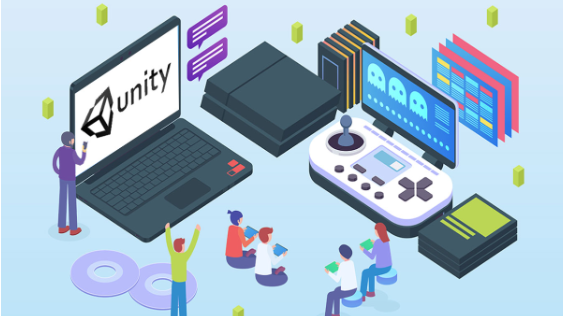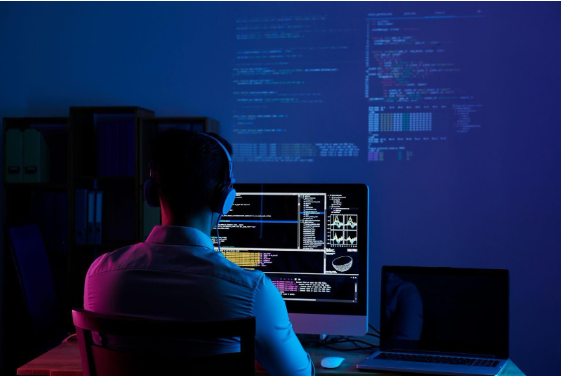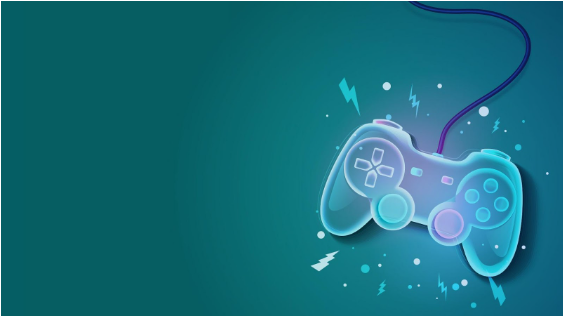In the ever-evolving world of digital entertainment, game development technologies stand as the backbone of creativity and innovation. These technologies encompass various tools and software that enable developers to bring their imaginative worlds to life. From the early days of pixelated graphics to today’s hyper-realistic environments, the evolution of game development tools has been nothing short of revolutionary. According to blog of Ranking, Understanding these technologies is crucial for anyone looking to dive into the world of game creation, whether as a hobbyist or a professional.
Exploring Game Development Technologies
A Brief History of Game Development Tools
Game development technologies historicity can be traced right back to the nadirs of programming languages and junior graphics. Today, it is possible for developers to build the most basic games with just a fragment of the code they used to write in the past. With the advancement of technology, there was development in the tools that the developers had to work with. The emergence of game engines helped the industry to progress and transfer the difficult work into a more approachable solution. Today, we have highly developed means and tools to create, design, and distribute games for each type of platform.
Popular Game Engines
In simple terms, game engines are the primary working platforms for game development, acting as a primary system for designing, prototyping, and deploying games. Among the most popular are:
- Unity: This highly portable platform is enjoyable for indie game developers and large studios in the game industry. With a friendly layout and an enormous asset store, newcomers can get started with Unity quickly, but individuals seeking deep performance can find what they need here.
- Unreal Engine: As famous for graphics, Unreal Engine is most commonly applied to AAA games. By creating beautiful visuals, it will make a better gaming experience. In extension, the Blueprint system will enable game developers to set up complex game mechanics without inanimate programming know-how.
- Godot Engine: A free-software engine with more features and is perceived to be very easy to use as it supports open-source code. Godot is an open-source engine that can be used for both 2D and 3D game development, making it the most suitable option for game developers.
- GameMaker Studio: Recommended for 2D games, GameMaker uses a drag-and-drop part design that helps make the development process relatively seamless. It is a favorite among indie developers for developing platformers and mobile games.

- Construct 2: Intended for newcomers, Construct 2 is a 2D game engine that does not presuppose programming skills. It also has a very basic layout of the software, so anyone can create games with it within a short span of time.
Programming Languages for Game Development
The nature of programming language affects the way in which a program will be developed regarding game development technologies. Some of the most commonly used languages in game development include:
- C++: C++ is reputed for its performance and reliability; it is preferred for game development, specifically for high-octane games.
- C#: However, the main programming language for Unity, known as C#, is still considered very basic to learn and use, which is why many students choose it.
- Java: A popular language for the Internet and utilized widely in the development of both mobile and web-based games due to its functionalities and ability to be transferred from one platform to another.
- Python: This is not a language commonly used in the development of games; however, due to the simplicity and ease of coding, Python can be used for small educational game prototypes.
- JavaScript: Crucial to most internet-based games, JavaScript makes the games highly responsive and dynamic in their presentation.

Basic Equipment/Edit, Design, and Creation of a Game
In fact, developing a game is not only a question of programming. Developers rely on a variety of tools to bring their visions to life:
- 3D Modeling Software: Blender, Maya, or 3DS Max are perfect for creating high-quality and elaborate 3D models and environments.
- 2D Art Tools: Ect, 2D art assets and textures are created with some software such as Adobe Photoshop, GIMP, and Krita.
- Level Design Tools: Tilemap is from Unity, and World Machine is from Unreal Engine to create complex level and environment designs.
- Animation Software: For character and scene animations, the Autodesk Animator and Adobe After Effects mean that the creations are animated smoothly.
- Sound Design Tools: FL Studio creates memorable soundscapes and sound effects, Audacity records voices and instruments, and Ableton Live for mixing and mastering the project.
Choosing the Right Technologies for Your Project
Selecting the appropriate tools and technologies ensures that your game development process is efficient and that the final product meets your expectations. Here are some key considerations for discussing the right game development technologies:
- Game Genre and Scope: The genre of your game will dictate many of your technology choices. For instance, a 2D platformer might benefit from a lightweight engine like Godot or GameMaker Studio, which are optimized for 2D graphics and simpler physics. On the other hand, a 3D RPG with complex environments and detailed character models might require a more robust engine like Unreal Engine or Unity, which offer advanced 3D rendering capabilities and extensive asset libraries.

- Target Platform: The platform you are developing will also influence your technology stack. PC and console games often require high-performance graphics and processing power, which engines like Unreal Engine can support. Mobile games, however, need to be optimized for lower power consumption and smaller screen sizes, making engines like Unity or Cocos2d more suitable. Additionally, cross-platform development tools can help streamline the process if you plan to release your game on multiple platforms.
- Learning Curve and Community Support: The ease of learning a new tool can greatly affect your development timeline. Some engines, like Unity, offer extensive documentation and a large community, making it easier for beginners to find tutorials and support. Conversely, more specialized tools might have a steeper learning curve but offer unique features that could benefit your project. It’s important to assess your team’s skill level and choose tools that align with their expertise.
- Cost and Licensing: Budget is always a consideration in game development. Some tools and engines require costly licenses, which can be a barrier for indie developers or small studios. However, many open-source and free-to-use options, such as Godot and Blender, provide powerful capabilities without the financial burden. Additionally, some commercial engines offer revenue-sharing models, which can be advantageous if you work with limited upfront capital.

Emerging Trends in Game Development Technology
- AI and Machine Learning: Technological advances such as artificial intelligence and machine learning are at the center of developing game environments that are much more responsive and interactive than before. These technologies make games proceed based on the players’ actions and provide individual, developing responses when we consider game development technologies. For instance, AI can be used to design NPCs that adapt in accordance with the players’ actions; the NPCs become more challenging. It also shows that machine learning can analyze player data to control the difficulty level in most games to remain interesting and playable to many.

- VR and AR Technologies: Virtual environments and augmented environments as features of modern technology, have significantly transformed the way of living. Compared to prior generations of games, VR places players in lifelike 3D space and offers players an experience of directly interacting with the virtual world. Games like “Beat Saber” and “Half-Life: Alyx” demonstrated that VR can deliver potentially memorable experiences. On the other hand, AR places new information on top of real-world environments, and this can be observed in games such as “Pokémon GO,” which commits game scenarios from the physical world to simultaneous interaction.
- Cloud Gaming and Game Streaming: Gaming as a service through the use of cloud computing is changing the way that people get to play games. Through the help of strong distant servers, these technologies enable players to effectively stream the games to their device instead of having extremely powerful local hardware. This makes gaming more inclusive, meaning that many more people can enjoy better games on the devices they use. Platforms such as NVIDIA GeForce Now and Xbox Cloud Gaming services are currently on the frontline, providing near-limitless access to games that can be played on demand. It is also the new trend that is transforming the ways in which games are being developed so that they run better as services hosted on the cloud and painting a new vision of games as a streaming service optimized for latency.

- Blockchain and NFTs in Gaming: Blockchain technology is introducing new possibilities for ownership and monetization in gaming. Using blockchain, developers can create unique, verifiable in-game assets that players can own. Non-fungible tokens (NFTs) are a key component of this trend, creating rare and collectible digital items that can be bought, sold, and traded on open markets. Games like “Axie Infinity” and “The Sandbox” are pioneering this space, allowing players to earn real-world value through gameplay. This integration of blockchain technology creates new economic models and fosters communities around shared digital assets.
Conclusion
In conclusion, game development technologies are the foundation of the gaming industry, enabling developers to create engaging and immersive experiences. By understanding the tools and technologies available, developers can choose the right ones for their projects and stay ahead of emerging trends. As we continue to explore game development possibilities, let’s embrace the creativity and innovation these technologies offer.